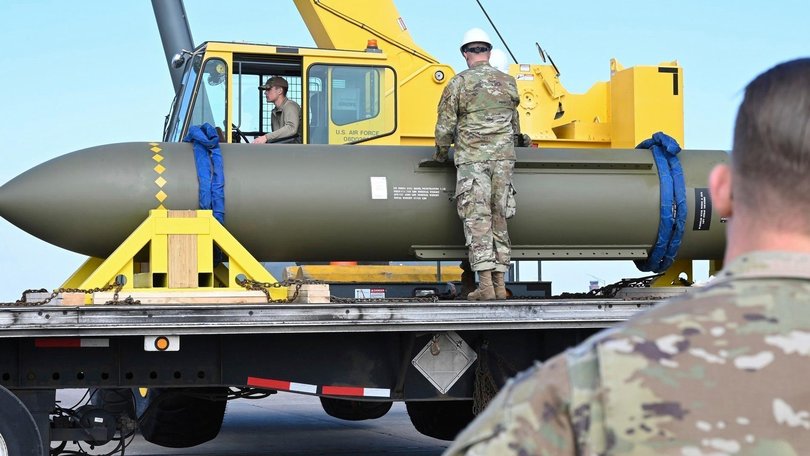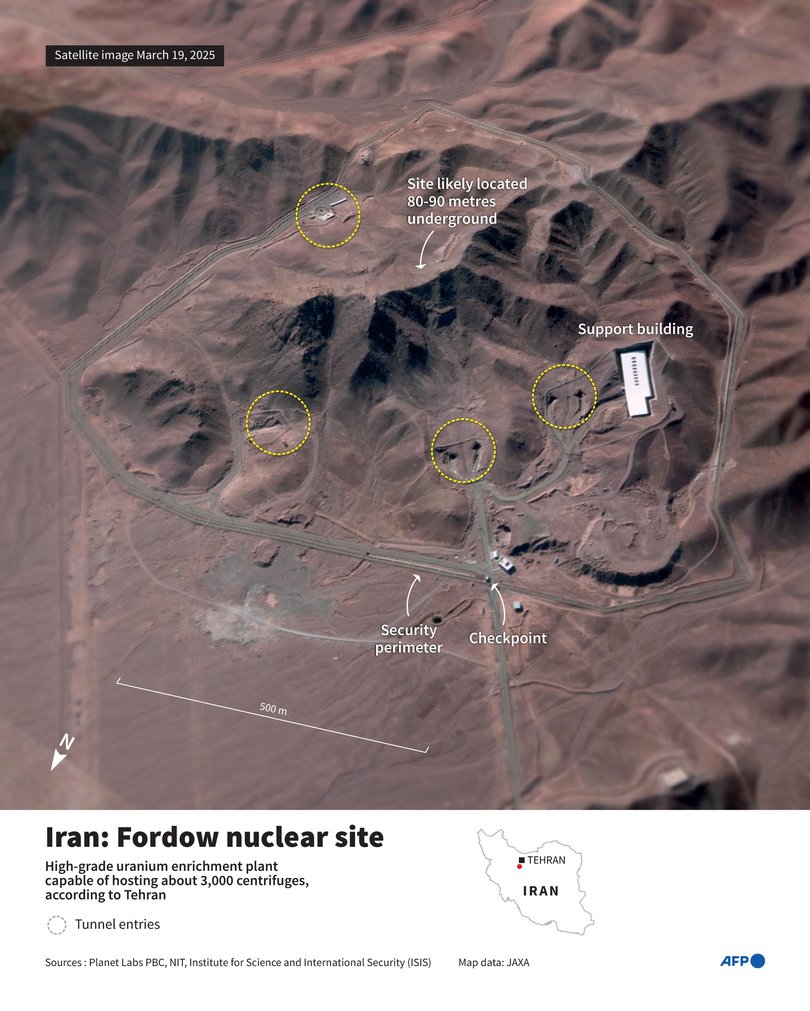Iran-Israel war: What is the Massive Ordnance Penetrator, the US bunker-busting bomb?

In the event the United States enters the escalating conflict between Israel and Iran, a likely focus will be on degrading or destroying Tehran’s underground facilities that enrich nuclear material.
That task would most likely fall to a small number of Air Force strategic bombers that are capable of delivering 30,000-pound precision-guided bombs designed to destroy subterranean targets.
This bomb, the GBU-57, is better known as a “bunker buster” or the Massive Ordnance Penetrator.
Sign up to The Nightly's newsletters.
Get the first look at the digital newspaper, curated daily stories and breaking headlines delivered to your inbox.
By continuing you agree to our Terms and Privacy Policy.Why is the MOP the right tool for the job?
It’s in the name. The MOP is designed for deeply buried and fortified facilities, such as bunkers and tunnels. Its design, sheer weight and steel alloy construction allow it to burrow underground and then explode, according to the Air Force.
Though the heaviest conventional weapon in the US arsenal, it is not designed to saturate explosives over a wide area. Commanders rely on its GPS-guided precision to hit specific, well-defended targets to destroy what ordinary bombs cannot reach. There are no public reports of the MOP being used in combat, experts have said.
Defence officials have said the MOP is capable of penetrating up to 60m. But it is probably more capable now after further development over the past two decades, said Trevor Ball, a former Army explosive ordnance disposal technician.

While the Israelis have relied on US munitions for its devastating air war in Gaza, Lebanon and Iran, their fighter jets cannot carry MOPs. The US B-2 Spirit stealth bomber is the only Air Force aircraft that can deploy the MOP, the service has said.
There are 19 operational B-2s, according to the Air Force. Travelling at subsonic speeds, but capable of midair refuelling, the B-2 can fly an extraordinary distance. During the Kosovo war in the late 1990s, B-2 pilots flew round-trip trips from their home station at Whiteman Air Force Base in Missouri to strike targets. In 2017, a pair of B-2s flew 34 hours to hit Islamic State camps in Libya.
Recent upgrades to the MOP include resolving an undescribed “integration issue” with the B-2, the Air Force said last year. The service also said it is testing technology that can help destroy targets where intelligence about substructures may be limited. A smart fuse on the MOP can detect voids on its path downward, such as rooms and floors, and explode at an optimal point, Ball said.
That would be an important capability if commanders decided they needed to strike the same deep target multiple times. It is unclear whether that technology has been put into operational use.

Which underground Iranian sites are likely targets?
Iran’s most deeply buried nuclear enrichment site is Fordow, in the desert southwest of Tehran.
The facility is fully underground, carved into a mountainside. UN inspectors who viewed the site noted tunnels with thick walls and blastproof doors, with some bunkers protected by up to 91m of rock, The Post reported in 2012.
Fordow is ostensibly designed to produce uranium enriched to 20 per cent purity. But an International Atomic Energy Agency inspection report on May 31 found that Iran had significantly increased its production there of 60 per cent enriched uranium, approaching the 90 per cent level needed to fuel a nuclear weapon.
Experts warn that even destroying the uranium-enriching centrifuges deep underground at Fordow would not necessarily mean the end of Iran’s nuclear program.
There may be enrichment sites or caches of nuclear fuel that UN inspectors are unaware of, said Richard Nephew, a lead US negotiator with Iran under the Obama administration and now a fellow at the Washington Institute for Near East Policy.
“Even if Fordow was evaporated tomorrow, we would still have massive concerns,” Mr Nephew said.
How have Israeli attacks affected Iran’s nuclear facilities?
Iran’s nuclear facilities were not irreversibly damaged in the first couple of waves of Israeli attacks, based on statements from both countries as well as videos and imagery of the damaged sites, The Washington Post reported.
Israel appeared to have attacked near Fordow, but did not hit the underground facility itself. Strikes at Natanz, Iran’s other main enrichment site, destroyed several facilities and damaged the electrical system, according to the IAEA and nonproliferation experts. Iran’s only above-ground enrichment site, part of a larger complex at Natanz known as the Pilot Fuel Enrichment Plant, was destroyed, IAEA Director General Rafael Grossi said Monday.

Analysts viewing satellite imagery had originally said the underground enrichment machinery at Natanz was unscathed. But the IAEA said in a post on Tuesday on X that its analyses “indicate direct impacts on the underground enrichment halls at Natanz.”
A uranium metal production facility in Isfahan, a military complex in Parchin and the Arak heavy water reactor southwest of Tehran and the Bushehr nuclear power plant are other nuclear sites that were hit, according to the Israel Defence Forces.
Mr Grossi confirmed the facility at Isfahan was hit but said Bushehr was not targeted or affected.
© 2025 , The Washington Post
